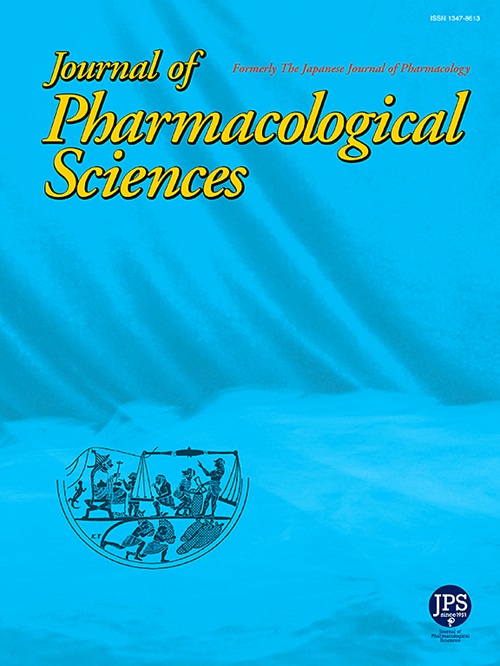用siRNA抑制SPARC基因在小鼠缺血/再灌注急性肾损伤模型中发挥治疗作用,抑制MMP-2/9和ADAMTS1过表达
IF 2.9
3区 医学
Q2 PHARMACOLOGY & PHARMACY
引用次数: 0
摘要
分泌蛋白酸性和富含半胱氨酸(SPARC),胶原结合基质细胞蛋白,据报道,促进炎症和纤维化在各种组织,包括肾脏。缺血再灌注(I/R)是急性肾损伤的一个重要过程。为了研究抑制SPARC是否可以减轻肾I/R损伤,我们在雄性BALB/c小鼠肾缺血45 min前1天注射靶向SPARC的小干扰RNA (siRNA),然后再灌注72 h。I/R后血清肌酐浓度、血尿素氮、组织学小管损伤、小管间质纤维化、I型胶原和转化生长因子-β表达升高。氧化应激标志物4-羟基-2-壬烯醛、炎症细胞因子单核细胞趋化蛋白-1和肿瘤坏死因子-α的表达也在I/R肾脏中上调。I/R后观察到SPARC mRNA过表达,免疫组化显示SPARC主要定位于受损的小管上皮细胞。此外,具有血小板反应蛋白1型基序的崩解素和金属蛋白酶(ADAMTS1)表达与SPARC共定位。注射靶向SPARC的siRNA可减轻肾功能障碍、组织学异常、胶原沉积、氧化应激和肾脏炎症。此外,SPARC基因敲低抑制了I/ r诱导的ADAMTS1和基质金属蛋白酶2/9表达的增加。综上所述,I/ r诱导的SPARC可能是治疗急性肾损伤的新靶点。本文章由计算机程序翻译,如有差异,请以英文原文为准。
Suppressing SPARC gene with siRNA exerts therapeutic effects and inhibits MMP-2/9 and ADAMTS1 overexpression in a murine model of ischemia/reperfusion-induced acute kidney injury
Secreted protein acidic and rich in cysteine (SPARC), a collagen-binding matricellular protein, is reported to facilitate inflammation and fibrosis in various tissues including the kidneys. Ischemia/reperfusion (I/R) is a major process of acute kidney injury. To investigate whether SPARC inhibition might attenuate renal I/R injury, we injected small interfering RNA (siRNA) targeting SPARC into male BALB/c mice one day before 45 min of renal ischemia followed by 72 h of reperfusion. Serum creatinine concentration, blood urea nitrogen, histological tubular damage, tubulointerstitial fibrosis, and expression of collagen I and transforming growth factor-β were increased after I/R. Expression of 4-hydroxy-2-nonenal, an oxidative stress marker, and the inflammatory cytokines monocyte chemoattractant protein-1 and tumor necrosis factor-α, were also upregulated in I/R kidneys. Overexpression of SPARC mRNA was observed after I/R, and immunohistochemistry revealed that SPARC was localized mainly in damaged tubuloepithelial cells. Additionally, a disintegrin and metalloproteinase with thrombospondin type 1 motif (ADAMTS1) expression colocalized with SPARC. Injection of siRNA targeting SPARC attenuated renal dysfunction, histological abnormalities, collagen deposition, oxidative stress, and renal inflammation. In addition, SPARC gene knockdown suppressed the I/R-induced increases in ADAMTS1 and matrix metalloproteinase-2/9 expression. In conclusion, I/R-induced SPARC could be a novel therapeutic target against acute kidney injury.
求助全文
通过发布文献求助,成功后即可免费获取论文全文。
去求助
来源期刊
CiteScore
6.20
自引率
2.90%
发文量
104
审稿时长
31 days
期刊介绍:
Journal of Pharmacological Sciences (JPS) is an international open access journal intended for the advancement of pharmacological sciences in the world. The Journal welcomes submissions in all fields of experimental and clinical pharmacology, including neuroscience, and biochemical, cellular, and molecular pharmacology for publication as Reviews, Full Papers or Short Communications. Short Communications are short research article intended to provide novel and exciting pharmacological findings. Manuscripts concerning descriptive case reports, pharmacokinetic and pharmacodynamic studies without pharmacological mechanism and dose-response determinations are not acceptable and will be rejected without peer review. The ethnopharmacological studies are also out of the scope of this journal. Furthermore, JPS does not publish work on the actions of biological extracts unknown chemical composition.

 求助内容:
求助内容: 应助结果提醒方式:
应助结果提醒方式:


